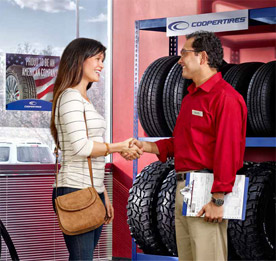Conserve Big with Mopar Tire Service Specials: Ideal Bargains and Specialist Treatment
Conserve Big with Mopar Tire Service Specials: Ideal Bargains and Specialist Treatment
Blog Article
Tire Service: The Influence of Climate Condition
When it comes to guaranteeing optimal efficiency and security on the road, comprehending the effect of weather condition problems on tire service is vital. In this conversation, we will certainly explore the elaborate connection between weather conditions and tire solution, shedding light on the value of weather-specific tire maintenance methods and considerations.
Warmth and Tire Performance
When exposed to high temperatures, tires experience adjustments in efficiency that can considerably affect vehicle security and handling. The heat generated from extended driving or warm climate conditions triggers the tire rubber to soften, leading to lowered tread life and raised wear. As the rubber becomes softer, the tire's hold when traveling diminishes, impacting braking ranges and overall traction. In extreme cases, excessive heat can even create tire blowouts, posing a severe safety risk to the car and its residents.
In addition, high temperature levels can increase the process of tire aging, triggering the rubber to weaken a lot more swiftly. To alleviate the impacts of heat on tire efficiency, chauffeurs need to regularly check their tire stress, revolve tires to make certain also use, and examine for any indicators of damage.
Cold Weather Condition Impacts
Cold climate problems can have a considerable effect on tire performance and safety and security. As temperature levels decline, tire rubber can harden, bring about lowered grip on icy or snow-covered roads. In cold weather, tires may also shed air pressure a lot more rapidly, which can impact managing and gas effectiveness. Additionally, chilly temperature levels can cause tire sidewalls to stiffen, raising the risk of damages from splits or various other road threats.
To mitigate the results of chilly weather on tires, it is essential to frequently inspect tire pressure and inflate them to the producer's recommended degrees. Using wintertime or all-season tires designed for cool weather condition conditions can likewise improve traction and hold on icy or snowy roadways - discount tires morris il. Appropriate tire upkeep, including routine evaluations for wear and damages, becomes a lot more essential throughout cooler months to make certain optimal performance and security
Rainy Issues Effect
Tires with damaged footsteps are much more vulnerable to hydroplaning, where a layer of water develops up between the roadway and the tire surface, leading to loss of traction. To combat this, motorists should frequently check their tires for sufficient tread depth and think about spending in tires specifically developed for damp problems.

Snow and Tire Safety
When driving in snowy problems, having the appropriate tires can make a significant distinction in safety and security and efficiency. Winter months tires are developed with unique rubber substances and step patterns to provide much better grip on snow and ice compared to all-season tires.
Along with using wintertime tires, it is critical to ensure they are appropriately blown up. Cold climate can trigger tire stress to go down, impacting grip and handling (tires morris il). Regularly checking and keeping the right tire stress is necessary for optimal efficiency in snowy conditions

Weather-Related Tire Upkeep
When faced with different climate conditions, appropriate tire maintenance comes to be a crucial element of lorry safety and security and performance. Weather-related tire maintenance includes an array of methods intended you could check here at ensuring optimum tire feature and long life in various weather condition scenarios. One crucial facet of weather-related tire maintenance is tire stress law. Varying temperatures can create tire pressure to differ, impacting traction and fuel effectiveness. Frequently readjusting and checking tire stress according to producer suggestions is important for safe driving in transforming climate conditions. Additionally, tire tread deepness plays a considerable function in managing different weather condition aspects. Tires with ample walk depth give better grip on damp or icy roads, decreasing the risk of hydroplaning or skidding. Evaluating tire walk routinely and replacing tires when walk wear gets to a certain depth is crucial for preserving traction and security in unfavorable weather. By focusing on weather-related tire maintenance, chauffeurs can improve security, improve automobile efficiency, and prolong the lifespan of their tires.
Verdict
To conclude, climate problems have a considerable impact on tire performance and security. From warm impacting tire stress and use to chilly climate decreasing grip, it is necessary to consider the weather condition when keeping and making use of tires. Rainy conditions can decrease hold and bring about hydroplaning, while snow can increase the threat of mishaps if tires are not correctly outfitted. Weather-related click to find out more tire upkeep is essential in making sure ideal performance and safety when driving.
In this conversation, we will certainly explore the detailed partnership in between weather conditions and tire service, shedding light on the importance of weather-specific tire upkeep practices and considerations.

Report this page